Exercise Yoga

Can yoga or meditation combined with exercise enhance emotion regulation ?
Emotion regulation is a crucial aspect of mental health, and it refers to the ability to manage and control one's emotional responses. There are various ways to enhance emotion regulation, and one of them is through physical activities such as yoga, meditation, and exercise. In this article, we will discuss how these practices can help improve emotion regulation. Yoga is a mind-body practice that combines physical postures, breathing techniques, and meditation. It has been shown to have numerous benefits for mental health, including enhancing emotion regulation. Yoga helps to reduce stress and anxiety, increases self-awareness, and promotes mindfulness. Meditation is another practice that involves focusing the mind on a particular object, thought, or activity to achieve a mentally clear and emotionally calm state. Like yoga, meditation has been shown to have numerous benefits for mental health, including enhancing emotion regulation. Meditation improves attention and focus, reduces emotional reactivity, and increases self-awareness. Exercise is another effective way to enhance emotion regulation. It reduces stress and anxiety, improves mood, and increases resilience. Combining yoga, meditation, and exercise can provide even greater benefits for emotion regulation by providing a comprehensive approach to well-being that addresses both the physical and mental aspects of emotion regulation.

Can yoga help with weight loss ?
Yoga can be a valuable addition to a weight loss program due to its ability to improve muscle tone, increase flexibility, reduce stress levels, and promote mindful eating habits. Incorporating yoga into your routine along with other forms of exercise and healthy lifestyle habits can help you achieve your weight loss goals and improve overall health and well-being.
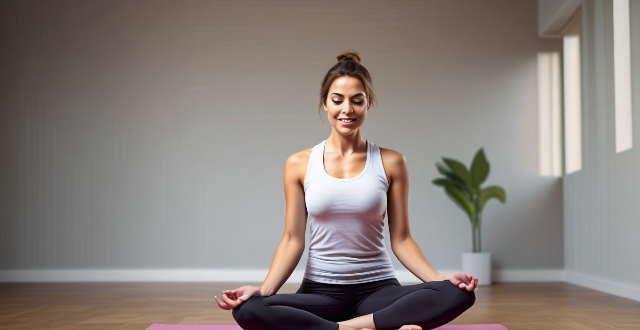
How can I incorporate simple yoga moves into my daily routine ?
Incorporating simple yoga moves into your daily routine can improve your health and well-being. Start with basic poses, create a morning or evening routine, take short breaks throughout the day, use yoga as exercise, practice mindfulness and breathing techniques, and join a class or workshop to learn more advanced poses.

Is yoga an effective method for stress relief ?
Yoga is a popular method for stress relief, offering physical, mental, and emotional benefits. Research supports its effectiveness, and incorporating yoga into your routine can significantly reduce stress levels. Consistency and personalization are key to experiencing its full benefits.
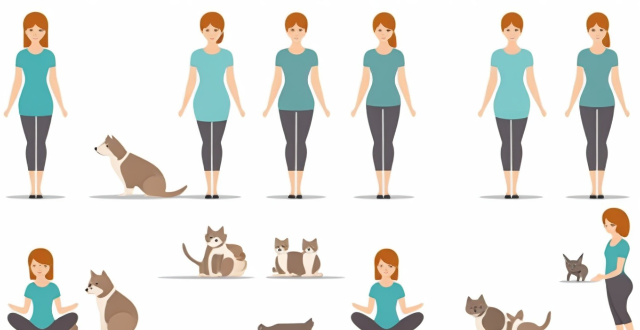
Can yoga poses be modified for pregnant women ?
Yoga poses can be modified for pregnant women to ensure safety and comfort. It's important to avoid overstretching, lying on the back or belly, and balance poses that put pressure on the abdominal area. Props like blocks and straps can help support the body and make poses more accessible. Examples of modified yoga poses include cat-cow pose, downward-facing dog, warrior II, child's pose, seated forward bend, and corpse pose. Always consult with a prenatal yoga instructor or healthcare provider before starting any new exercise routine during pregnancy.

Can beginners perform complex yoga poses safely ?
Yoga is a popular form of exercise that involves poses, breathing techniques, and meditation. While it can be beneficial for people of all ages and fitness levels, complex yoga poses require caution, especially for beginners. Attempting these poses without proper guidance and preparation can lead to injuries such as strains, sprains, and fractures. However, beginners can perform complex yoga poses safely by starting with basic poses, seeking professional guidance, using props and modifications, and listening to their bodies. Following these steps ensures a safe and effective yoga practice.
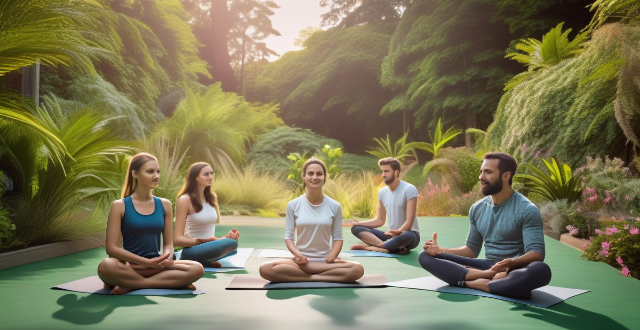
How does yoga combine physical activity with mental relaxation ?
Yoga integrates physical activity and mental relaxation through various practices like asanas, pranayama, dhyana, and dharana. Asanas improve flexibility, strength, and endurance, while vinyasa increases heart rate for cardiovascular exercise. Pranayama techniques enhance lung capacity and stamina. Meditation calms the mind, and concentration practices sharpen focus. Yogic philosophy promotes emotional stability. Mindful movement connects physical practice with mental awareness, synchronized breath reduces strain, and restorative poses allow for deep relaxation. Overall, yoga offers a holistic approach to wellness by harmoniously blending body and mind.

What are the benefits of doing yoga poses regularly ?
Yoga is a practice that originated in ancient India and has become increasingly popular around the world for its numerous physical, mental, and emotional benefits. Practicing yoga poses regularly can have a profound impact on overall well-being. Below are some of the key benefits: ## **Physical Health** ### *Improved Flexibility* Regular yoga practice helps to stretch and strengthen muscles, improving flexibility over time. This increased range of motion can reduce the risk of injury during daily activities or other forms of exercise. ### *Increased Strength* Many yoga poses require holding your body weight, which can lead to increased muscle strength, especially in the core, arms, and legs. ### *Better Posture* The awareness of alignment and posture in yoga can translate into better posture off the mat, reducing back pain and promoting better breathing. ### *Enhanced Balance* Yoga poses often require balance, which can improve stability and prevent falls as we age. ### *Pain Relief* Yoga can alleviate chronic pain by stretching tight muscles and increasing blood flow to damaged tissues. ## **Mental Health** ### *Reduced Stress* Yoga incorporates deep breathing exercises that help to calm the nervous system, reducing stress levels. ### *Improved Concentration* The focus required to maintain poses can increase mental clarity and concentration. ### *Emotional Balance* Yoga encourages mindfulness, helping individuals to develop a more balanced emotional state by becoming more aware of their feelings. ## **Spiritual Well-being** ### *Mindful Awareness* Yoga fosters a connection between the mind and body, leading to greater self-awareness and spiritual growth. ### *Inner Peace* The meditative aspect of yoga can cultivate a sense of inner peace and tranquility. ### *Personal Growth* Yoga philosophy emphasizes self-acceptance and non-judgment, which can lead to personal growth and a deeper understanding of oneself. ## **Lifestyle Habits** ### *Healthy Lifestyle Choices* Yoga practitioners often find themselves making healthier lifestyle choices, such as eating a more balanced diet and choosing less stressful activities. ### *Community Connection* Attending yoga classes provides an opportunity to connect with like-minded individuals and build a supportive community. ### *Self-Care Ritual* Regular yoga practice becomes a form of self-care that individuals look forward to, providing a dedicated time for relaxation and rejuvenation.

How can I do simple yoga exercises at home ?
The provided text offers a guide on how to do simple yoga exercises at home. It lists six yoga poses, namely the Cat-Cow Pose, Downward-Facing Dog, Child's Pose, Warrior I, Tree Pose, and Corpse Pose. Each pose is accompanied by instructions on how to perform it correctly and its benefits. The poses aim to improve flexibility, strength, balance, and reduce stress and anxiety.
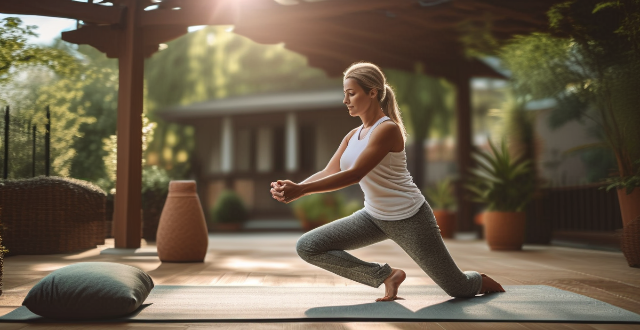
Is it necessary to use props while practicing yoga poses ?
Props can be beneficial for alignment, modification, deepening practice, and comfort in yoga. However, they should be used wisely to avoid over-reliance or incorrect use. Individual needs and preferences also play a role in deciding whether to use props while practicing yoga poses.
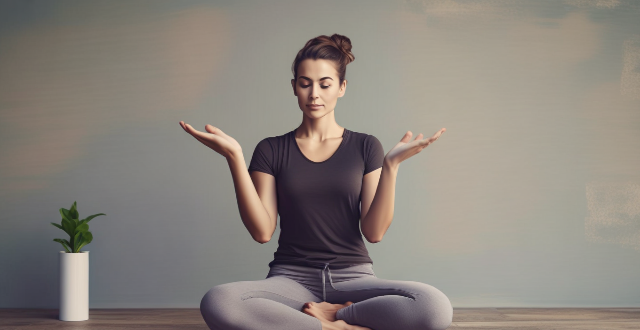
What is the best time of day to practice yoga poses ?
Yoga offers numerous benefits for both the body and mind. The best time of day to practice yoga poses varies from person to person, depending on individual schedules, preferences, and needs. Morning sessions can kickstart metabolism and improve mental clarity, midday practices can relieve stress and rejuvenate the body, while evening yoga can help relax and prepare for sleep. Consistency is key in any yoga practice, so find what works best for you and maintain regularity for optimal results.
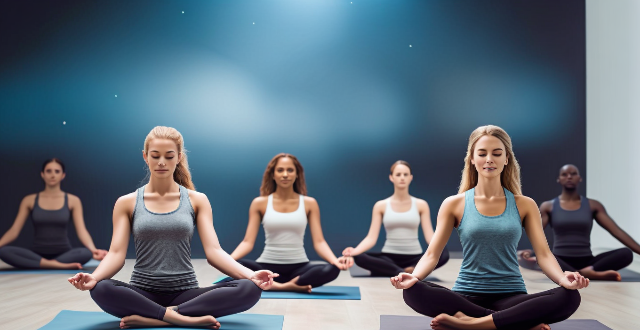
Can simple yoga help with stress relief and relaxation ?
Yoga, a practice that originated in ancient India, combines physical postures, breathing techniques, and meditation to promote overall well-being. Many people turn to yoga as a way to manage stress and find relaxation. Simple yoga can make a difference by providing both physical and mental benefits. Practicing yoga regularly can help improve flexibility and strength, better posture, increased energy, reduced stress and anxiety, improved focus and concentration, enhanced mood, better sleep, and mindfulness. To incorporate simple yoga into your routine, find a comfortable space, start with basic poses, focus on your breath, incorporate meditation, be consistent, and join a class or find online resources. By doing so, you can create a calming yoga routine that works for you and positively impacts your overall well-being.
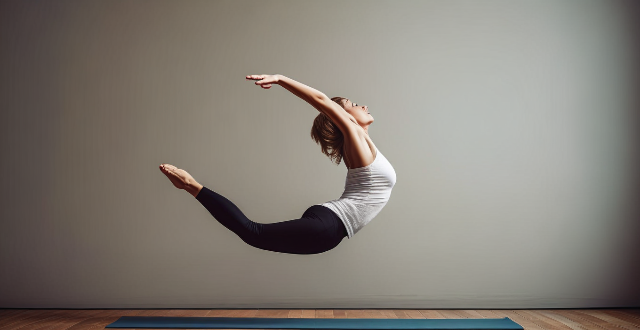
How long does it take to master a yoga pose ?
Mastering a yoga pose requires time, dedication, and patience. Factors affecting the timeline include physical fitness level, practice frequency, quality of instruction, individual body type, and mindset. The time it takes to master a pose varies greatly, but generally, beginner poses can be mastered within weeks to months, intermediate poses within months to a year, and advanced poses may take years. Tips for mastering a yoga pose include starting with the basics, focusing on alignment, practicing mindfully, staying patient and persistent, incorporating variety, seeking feedback, and maintaining a holistic approach.
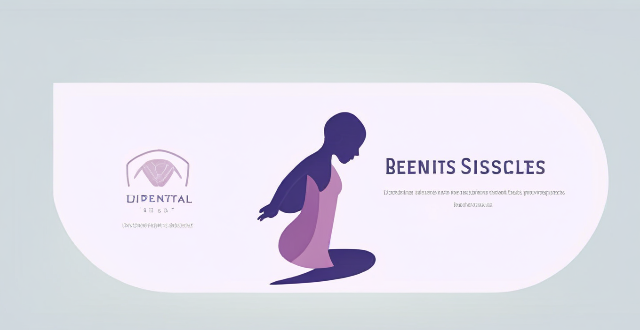
What are the benefits of practicing simple yoga postures regularly ?
The text discusses the benefits of practicing simple yoga postures regularly, including physical health benefits such as improved flexibility and mobility, strengthened muscles, better posture, and increased stamina. It also covers mental and emotional well-being benefits like stress reduction, improved concentration, emotional balance, and mind-body connection. Additionally, the text touches on lifestyle integration, adaptability, and personal growth. Overall, the text emphasizes the positive impact of regular yoga practice on overall health and well-being.
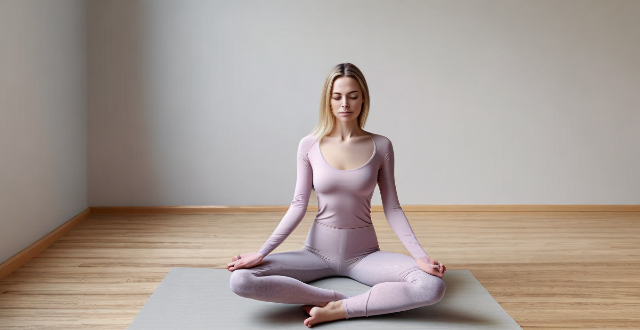
How do I choose a good quality yoga mat ?
When selecting a yoga mat, consider factors such as material, thickness, texture, durability, eco-friendliness, price, extra features, and cleaning care. Materials range from PVC to natural rubber and jute, each with its pros and cons. Thickness varies from 1.5mm for travel to 5mm+ for cushioning. Texture can be smooth or grippy, affecting slip resistance. Durability is crucial for long-lasting use. Eco-friendly options are available for environmentally conscious yogis. Price doesn't always equate to quality, so find a mat that fits your budget. Extra features like alignment markers and travel straps can enhance your practice. Cleaning and care requirements vary, so choose a mat you're willing to maintain. The best yoga mat supports your practice physically and ethically, ensuring you enjoy using it and progress in your yoga journey.

Are there any quick and easy yoga routines for busy people ?
Yoga is a great way to improve your flexibility, strength, and relaxation. However, many people find it difficult to make time for yoga in their busy schedules. Fortunately, there are quick and easy yoga routines that can be done in just a few minutes. Here are some tips and tricks for incorporating yoga into your daily routine: 1. Starting your day with yoga can help you feel energized and focused. Here's a simple morning yoga routine that takes less than five minutes: 2. If you work at a desk all day, try these quick yoga poses to release tension and improve posture: 3. Ending your day with yoga can help you relax and prepare for sleep. Here's a simple evening yoga routine that takes less than ten minutes:
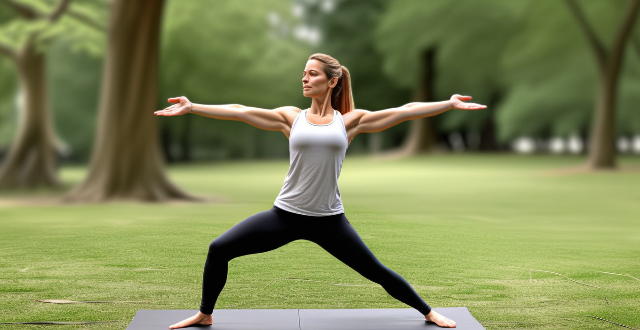
How often should I practice easy yoga poses to see results ?
The article discusses how often one should practice easy yoga poses to see results. Consistency is crucial, and beginners should aim for two to three times per week while intermediate practitioners can increase frequency to four or five times per week. Advanced practitioners may benefit from practicing six or seven times per week but should listen to their body and rest when needed. Quality is more important than quantity, and tips for maximizing your yoga practice include mixing up poses, using props, staying present, and practicing mindfulness.

Are there any online resources or videos for learning easy yoga poses ?
The text is about the best online resources and videos for learning easy yoga poses. It mentions three types of resources: websites, YouTube channels, and apps. The recommended websites are Yoga Journal, Gaia, and DoYouYoga. The suggested YouTube channels are Yoga with Adriene, Fightmaster Yoga, and Yoga with Kassandra. The top apps are Down Dog, Pocket Yoga, and Simply Yoga.
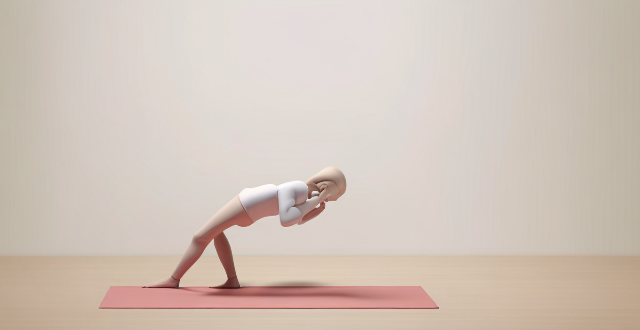
What are some common mistakes to avoid when practicing simple yoga postures ?
When practicing simple yoga postures, it is crucialWhen practicing simple yoga postures, it is crucial as not warming up properly, it is crucial to avoid common mistakes such as not warming up properly, ignoring alignment, overexertion, neglecting breathing, comparing oneself to others, and skipping Savasana. To prevent these errors, warm up gradually with dynamic stretches, focus on proper alignment, start at a beginner level and build up slowly, practice diaphragmatic breathing, set individual goals, and make time for Savasana. By avoiding these pitfalls, you can cultivate a safer, more enjoyable, and effective yoga practice that supports both physical health and mental well-being.

How does exercise affect sleep patterns and quality ?
Exercise significantly influences sleep patterns and quality. Immediate effects include increased alertness and better body temperature regulation for sleep. Long-term, regular exercise improves sleep quality and regulates sleep patterns. Different types of exercise—aerobic, anaerobic, and mindful movements like yoga—all positively affect sleep but may require varying recovery times. The timing of exercise is crucial; morning workouts set the day's tone with minimal sleep interference, while late-night exercises can hinder sleep preparation. Tailoring workout routines to individual needs optimizes rest and overall well-being.

Can exercise prevent osteoporosis ?
Exercise plays a crucial role in maintaining healthy bones by increasing bone density and strength. Effective exercises for preventing osteoporosis include weight-bearing exercises, strength training, balance exercises, high-impact exercises, and flexibility exercises. Incorporating these exercises into your routine can help reduce the risk of osteoporosis and maintain strong bones throughout your life.

How many times a week should I practice yoga poses to see results ?
Practicing yoga poses is an excellent way to improve your flexibility, strength, and overall well-being. However, the frequency of your practice can greatly impact the results you achieve. In this article, we will discuss how many times a week you should practice yoga poses to see noticeable improvements in your physical and mental health. Before determining the ideal number of yoga sessions per week, it's essential to consider several key factors: your current fitness level and experience with yoga, the amount of time you can dedicate to each session, and your specific goals (e.g., increased flexibility, stress relief, muscle building). By taking these factors into account, you can create a personalized yoga routine that suits your needs and helps you achieve your desired outcomes. For beginners, starting with two or three sessions per week is generally recommended. This allows your body to gradually adapt to the postures and prevents overexertion or injury. As you become more comfortable with the practice, you can gradually increase the frequency of your sessions. Once you have established a consistent yoga practice and gained some experience, increasing the frequency of your sessions can help you continue to see progress. For intermediate practitioners, aiming for four to five sessions per week is often beneficial. This allows you to maintain your current level of flexibility and strength while also challenging yourself to try more advanced postures and sequences. Advanced yogis who have been practicing for several years may choose to practice daily or even multiple times per day. This level of commitment requires a significant amount of time, discipline, and dedication but can lead to profound transformations in both physical ability and mental clarity. Regardless of how frequently you choose to practice yoga poses, there are several tips that can help you maximize the benefits of your sessions: set clear goals, mix up your routine, stay hydrated, and listen to your body. By following these guidelines and adjusting your frequency based on your individual needs and goals, you can create a yoga practice that leads to lasting improvements in both your physical and mental well-being.

Can exercise alleviate symptoms of PTSD ?
Exercise has been shown to alleviate PTSD symptoms such as flashbacks, nightmares, and avoidance behaviors. Research suggests that exercise may reduce anxiety and depression, improve mood, reduce stress, and improve sleep quality in individuals with PTSD. Endorphins released during exercise may also play a role in reducing symptoms. However, more research is needed to determine the optimal types and doses of exercise for different populations.
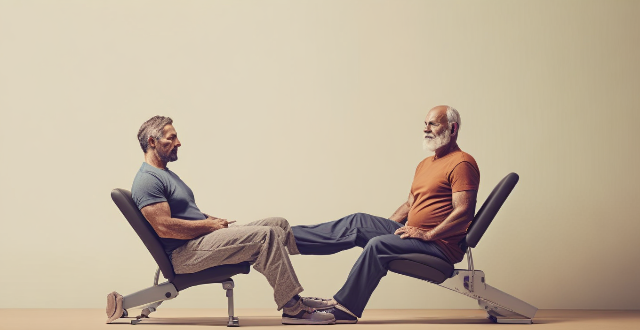
What role does exercise play in maintaining cognitive function in old age ?
Exercise is crucial for maintaining cognitive function in old age, with benefits including improved blood flow, reduced inflammation, and increased neuroplasticity. Aerobic exercise, resistance training, and activities like yoga and tai chi are all beneficial. Incorporating physical activity into your daily routine can help keep your mind sharp as you age.

Does exercise have different effects on cognitive function at different ages ?
This article explores the relationship between exercise and cognitive function across various age groups. It highlights the benefits of exercise for children's cognitive development, adults' reduced risk of cognitive decline, and older adults' slowed cognitive decline. Examples of suitable exercises for each age group are provided, including playing sports for children, aerobic activities for adults, and walking or cycling for older adults. The article concludes that incorporating physical activity into daily routines at any age is crucial for maintaining cognitive health and overall well-being.

How can I incorporate aerobic exercise into my daily routine ?
Incorporating aerobic exercise into your daily routine can improve cardiovascular health, burn calories, and enhance mood and energy levels. Here are ways to seamlessly incorporate aerobic exercise into your day: 1. **Morning Vigor**: Start the day with activities like jogging, cycling, or jump roping. 2. **Lunch Break Activities**: Use your lunch break for stair climbing, walking meetings, or yoga. 3. **Post-Work Energy Booster**: After work, engage in gym sessions, outdoor sports, or dancing. 4. **Evening Wind-Down**: Before bedtime, consider gentle exercises like evening walks, Tai Chi, or swimming. 5. **Weekend Adventures**: On weekends, engage in longer duration exercises like hiking, biking, or water sports. 6. **Lifestyle Integration**: Make aerobic exercise a habit by commuting actively, doing active errands, or using fitness trackers.

How does exercise improve cognitive function ?
Exercise plays a crucial role in enhancing cognitive function, including memory, attention, and problem-solving skills. It promotes brain plasticity, increases blood flow and oxygenation, reduces inflammation, and improves sleep quality. Incorporating exercise into your routine can be done through various activities such as running, swimming, or yoga. Start small and gradually increase intensity and duration, find enjoyable activities, incorporate mindful movement, make it social, set realistic goals, and consult with a professional if needed.
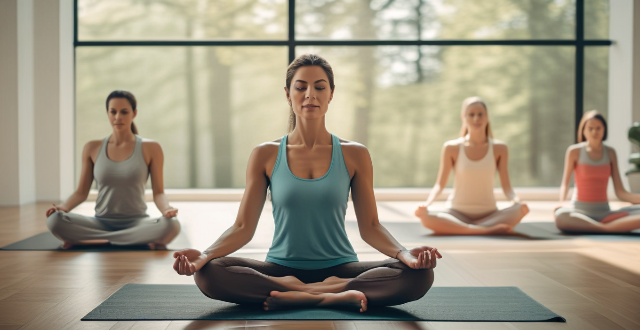
Are there any specific exercise programs designed for seniors that focus on building social connections ?
The article discusses the benefits of exercise programs for seniors that focus on building social connections. It highlights how regular exercise can improve physical health, mental health, and increase social connections in seniors. Examples of such programs include SilverSneakers, Tai Chi, walking groups, yoga, and water aerobics. The article emphasizes the importance of staying active and connected within communities as we age.

Can people with osteoporosis still do exercise safely ?
Osteoporosis is a condition characterized by low bone mass and deterioration of bone tissue, leading to brittle bones that are prone to fractures. It is a common concern among older adults, especially women. While exercise is generally recommended for maintaining overall health, it is important to consider the safety of physical activity for individuals with osteoporosis. In this article, we will explore whether people with osteoporosis can still do exercise safely and what precautions should be taken. Is Exercise Safe for People with Osteoporosis? Benefits of Exercise for Osteoporosis: - Improved Bone Density: Regular weight-bearing exercises can help improve bone density in individuals with osteoporosis. - Increased Strength and Balance: Resistance training and balance exercises can enhance muscle strength and reduce the risk of falls. - Better Quality of Life: Engaging in physical activities can improve mood, reduce pain, and enhance overall well-being. Risks Associated with Exercise for Osteoporosis: - Fracture Risk: High-impact activities or excessive force during exercise may increase the risk of fractures in people with osteoporosis. - Joint Stress: Some exercises may put excessive stress on joints, potentially leading to joint pain or damage. Safe Exercises for People with Osteoporosis: Weight-Bearing Exercises: - Walking: A low-impact activity that can help maintain bone density. - Dancing: A fun way to engage in weight-bearing exercise while also improving balance. Resistance Training: - Light Weight Lifting: Using light weights or resistance bands can strengthen muscles without putting too much strain on bones. - Bodyweight Exercises: Squats, lunges, and step-ups can be modified to suit individual abilities and provide resistance training benefits. Flexibility and Balance Exercises: - Tai Chi: A gentle form of exercise that focuses on slow, flowing movements to improve balance and flexibility. - Yoga: Certain yoga poses can help enhance flexibility, balance, and strength, but it is essential to avoid high-impact or bending poses that may increase fracture risk. Precautions to Take During Exercise: 1. Consult with a Healthcare Professional: Before starting any exercise program, it is crucial to consult with a healthcare professional who can assess your individual needs and risks. 2. Start Slowly: Begin with low-intensity exercises and gradually increase the duration and intensity as your body adapts. 3. Use Proper Technique: Ensure proper alignment and technique during exercises to minimize the risk of injury. 4. Wear Appropriate Footwear: Choose shoes with good support and cushioning to reduce the impact on joints and bones. 5. Avoid High-Impact Activities: Steer clear of activities like jumping or running that may increase the risk of fractures. 6. Listen to Your Body: If you experience pain or discomfort during exercise, stop immediately and seek advice from a healthcare professional. 7. Incorporate Rest Days: Allow your body time to recover between exercise sessions by including rest days in your routine.